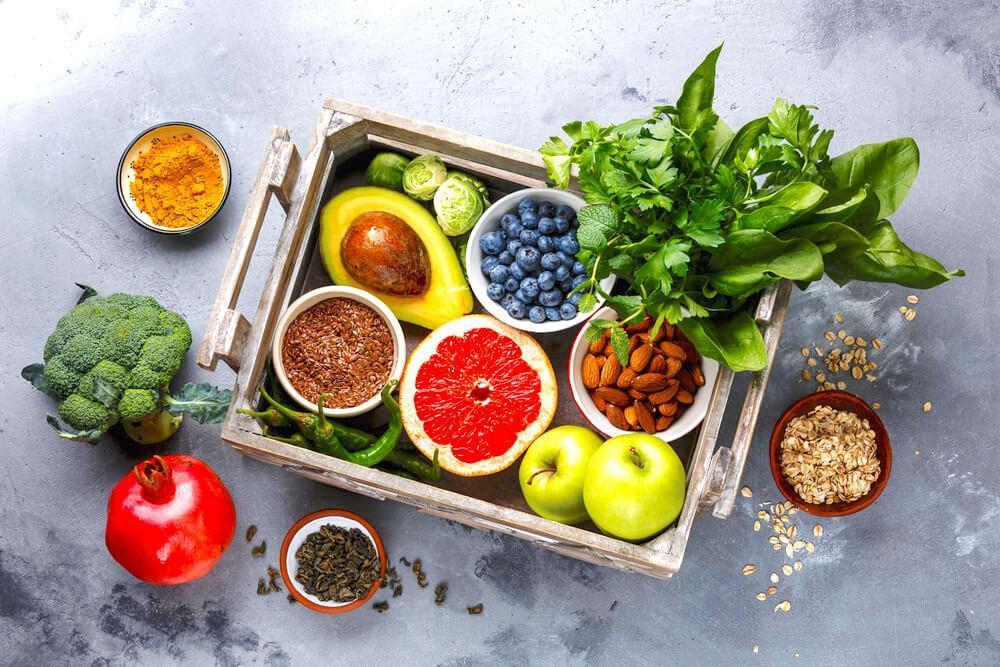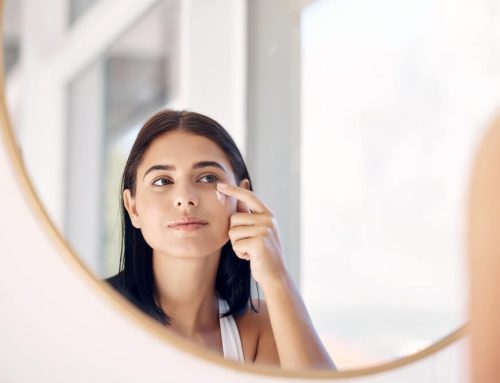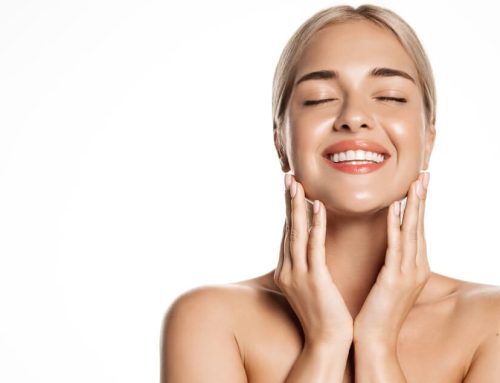Whether you’re out and about running errands or hitting the pavement with that new set of running shoes, your number one enemy (or should I say your skin’s number one enemy) the sun. Especially if you happen to live in a hot climate. Let’s break out the jargon jar on ‘What are antioxidants? (AKA free radicals)’ and what does it do for your skin?
The History of Antioxidants
Though we don’t exactly know who discovered antioxidants, these substances have been mentioned within medical literature that has dated back to early 19th century with each antioxidant having its own unique story of discovery.
Vitamins C and E was first found by Dr. Henry A. Mattill during the 1920s to 1950s. After that we have Joe McCord, another researcher who discovered superoxide dismutase, which is an antioxidant enzyme. The term antioxidant originally was used to refer specifically to a chemical that prevented the consumption of oxygen.
During the late 19th and early 20th century, much study was devoted to the uses of antioxidants in important industrial processes, such as the prevention of metal corrosion, the vulcanization of rubber, and the polymerization of fuels in the fouling of internal combustion engines.
Antioxidants are typically linked to photoaging of the skin or sun damaged skin in which the degree of sun exposure and amount of melanin in the skin determines the extent of damage done in the form of wrinkles, mottled pigmentation (hypo- or hyperpigmentation), rough skin, loss of the skin tone, dryness, sallowness, laxity, leathery appearance, skin cancer, and melanoma, among other more horrible effects.
All these commonly occur on exposed areas of the body such as the face, neck, upper chest, hands, and forearms.
What Are Antioxidants?
Well, antioxidants are a group of beneficial nutrients, vitamins, minerals and enzymes. These are molecules that are capable of slowing or preventing the oxidation of other molecules which is done by removing the free radicals and damage from these cells.
In other words, they slow down and can even stop oxidative damage which results in skin aging. Antioxidants are reducing agents, meaning antioxidants reduce the damaging oxidative process in cells, including skin cells. This is done by blocking the process of oxidation by neutralizing free radicals which turn the oils of our skin rancid which in turn damages the collagen in the skin.
Free radicals are basically molecules with unpaired electrons, which makes them unstable and chemically reactive. When we are young, our cells contain a defence system called superoxide dismutase (SOD) that helps fight these free radicals.
However, as we age, SOD doesn’t work so well anymore, which in turn causes free radicals to damage our cells. In time, these accumulated detrimental effects of free radicals show up as aging, fatigue, and other serious ailments like cancer which can be defined as gradual accumulation of free-radical damage.
Where Can I find Them?
Antioxidants are typically found in fruits and vegetables, usually seen in plants of bright, distinctive colors, such as red cherries, orange carrots and purple blueberries (for instance).
The most common antioxidants are vitamins A, C and E, and lycopene. Each of these antioxidants have shown specific benefits on the skin such as:
Vitamin E
The skin derives most of its benefits from vitamin E, especially through topical treatments as it is better absorbed than oral supplements.
Vitamin E is available in two forms: alpha-tocopherol (alcohol-based) and alpha-tocopherol acetate. The latter which does not penetrate the skin as easily. Vitamin E works in several ways to protect and defend the skin from outside elements that would have a profoundly negative impact on skin.
Vitamin E is also often found in lotions and sunscreens because of its supporting role in preventing UV damage and drying out of the skin.
Vitamin C
Vitamin C or its longer more difficult name we may not be used to ‘ascorbic acid’, ‘tetrahexyldecyl’ ‘ascorbate’, and other ridiculously hard given name to pronounce is a potent antioxidant that’s particularly effective in diminishing the look of fine lines, wrinkles, dullness, and uneven skin tone.
This well-researched water-soluble vitamin is considered an anti-aging superstar for all skin types.
Lycopene
Primarily comes from tomatoes is fantastic in smoothing out skin texture as it promotes collagen production and reduces the DNA damage that leads to wrinkles. Commonly found in supplement or skin care products such as topical formulas as lycopene is easily absorbed by the skin.
Green Tea
Often times associated with new age food, this super food is a helpful ally in preventing everything from heart disease and cancer to skin aging and weight gain. Not to mention if you’re into organic skin care than it’s a common ingredient found in masks and toners as a cheap and green alternative for your skin.
The secret ingredients are chemicals called catechins, which are antioxidants that can clear cell damage on the skin and repair wrinkles, blemishes, control oil, tighten pores, remove dead skin and any other impurities. When applied to the skin, green tea can reduce sun damage by reducing inflammation and tackling free radicals.
Coffee Berry
Also known as “Cherries of Coffee” is a popular ingredient in anti-aging formula usually used to prevents collagen damage, reduces wrinkles and protects the skin against damage. It also has anti-inflammatory properties, which can lessen the appearance of fine lines and wrinkles, leading to more youthful looking skin.
Grape Seed
Grape seed is extracted from vitis vinifera or grapes and is rich in proanthocyanidins, which belong to the flavonoid family. Proanthocyanidins are potent antioxidants with strong free radical scavenging activities. Grape seed extract has been shown to be an even stronger scavenger of free radicals than vitamins C and E.
Genistein
Genistein is an isoflavone that can be found in soybeans, flava beans, kudzu and lupin with the capacity to inhibit UV-induced oxidative DNA damage. Genistein, can be either topically applied or orally supplemented, was shown to effectively protect human skin against UVB-induced skin photodamage.
Niacinamide
Niacinamide also known as nicotinamide found in vitamin B3 is a powerful antioxidant that has shown to exhibit anti-inflammatory and depigmenting properties. It has also shown to improve the texture and tone of the skin, as well as reduce fine lines, wrinkles and hyperpigmentation. As a supplement taken orally it treats pellagra.
Resveratrol
Resveratrol is a potent polyphenolic antioxidant that’s found in red grapes, red wine, nuts, and fruits such as blueberries and cranberries. It’s relatively new on the market, but emerging research is showing that resveratrol is another antioxidant superhero for your skin.
Applied topically, resveratrol is able to protect skin’s surface, rebuff negative environmental influences, and brightens a tired-looking complexion. It also has significant skin-calming properties that may help minimize the look of redness. Look for resveratrol in moisturizers and eye creams.
Retinol
Retinol the technical term for vitamin A has a long-established reputation as one of the most extraordinary ingredients for skin. It’s both a skin-restoring ingredient and an antioxidant, and provides multiple benefits for almost every skincare concern imaginable, from uneven skin tone, bumps, enlarged pores, rough surface texture, fine lines and wrinkles, and improving skin luminosity.
Retinol has been shown to improve skin’s resilience, which contributes to its overall feeling of firmness and more youthful, healthy appearance.
Due to its anti-aging ability, retinol is a key ingredient to look for if you want to minimize the appearance of fine lines, wrinkles, dullness, and uneven skin tone. As an added benefit, retinol also has been shown to unclog congested pores and soften the appearance of the red areas that many people perceive as surface imperfections.
Some food containing antioxidant are: Beans, Berries (Blueberries, Cranberries, Blackberry, Strawberry), Prunes, Artichoke, Apple, Cherry, Potatoes, Nuts (Pecans), Grapes, Oranges, Kale, Spinach, Brussel Sprout, Broccoli, Beets, Bell peppers, etc.
The skin is the largest organ in the body therefore besides having the benefits as depicted above there are three different criteria’s that must be met before they are used in our beauty products.
Free radical damage can be controlled and prevented by applying skin care products with antioxidants directly onto the skin. Topical products containing antioxidants in effect, defend the skin, help in reducing scars and promote healing.
In other words, antioxidants assist in protecting and promoting the building blocks of collagen. Since the antioxidants are destroyed or oxidized in the process, you have to continue to feed the body and skin with fresh antioxidants to keep up with the free-radical damage.
How to Use Antioxidants
Stability
Some skincare companies are solving the problem of rapid antioxidant breakdown, especially upon exposure to light, by packaging lotions, creams and serums in dark brown, blue or opaque bottles and in metal tubes.
Other companies are including powdered vitamin C in a separate package; you mix it into the moisturizer at the time of use.
A common plant compound called ferulic acid is also emerging as an effective stabilizer, based on new scientific research.
Absorption
Antioxidants can either be taken orally with supplements or by eating food high in antioxidants which will be then circulated through the body and then absorbed into cells.
However, when it comes to topical application on the skin the concern here is if they would be absorbed at all or sit on the topmost layer of the skin where they could be washed or rubbed off instead of being absorbed into the skin cells where their protective action is most effective.
Many studies and reviews have appeared in medical journals confirming the ability of antioxidants to be absorbed into skin cells.
Concentration
Nonetheless, it’s important to ask: “How much is enough to be effective?” That question is still being determined. Levels are unlikely to be effective, yet concentrations that are too high run the risk of provoking skin irritation. Farris explains that there is an optimal concentration level for each antioxidant.
Free Radicals and Exercise
Enough about products! Here’s another great way to keep looking young and fresh is to get your body moving and your blood pumping! During cardiovascular exercise, oxygen consumption increases dramatically. This then leads to a corresponding increase in free radical production. So, does free radical production during regular exercise exceed the protective capacity of the body’s antioxidant defence system?
According to Gomez-Cabrera et al. (2005), it appears that free radicals only cause damage when the aerobic exercise is too exhaustive or extensive. What is more intriguing however is that new research suggests that exercise-induced free radical production can actually promote insulin sensitivity in humans.
Ristow et al. 2009 as such becomes a catalyst in the prevention of type 2 diabetes. In other words, make sure moderate exercise specifically here it means don’t go ham on the cardio as it can backfire on you as the body has an intensity limit in developing and building antioxidant defences. Be creative with your antioxidant food choices and committed to your exercise routines as your health depends on it.
So, there you have it! Broken down from its history to its components and finally the benefits it provides. Ultimately, it’s important to note that oxidation is a natural process that occurs from something as natural as your metabolism.
Oxidative stress occurs when there are too many free radicals and too much cellular damage. Oxidative stress is associated with damage of proteins, lipids and nucleic acids, according to an article in the Pharmacognosy Review. Several studies throughout the last few decades have suggested that oxidative stress plays a major role in the development of many conditions, including macular degeneration, cardiovascular disease, certain cancers, emphysema, alcoholism, Alzheimer’s disease, Parkinson’s disease, ulcers and all inflammatory diseases, such as arthritis and lupus.
Antioxidants are extremely hyped up with many people who not know the use or the many properties they possess besides anti-aging or sun aging, when in fact they also help with scar treatment, hair growth, diabetes, etc. It is so important that everyone have a general understanding that antioxidants are not part of a New Age hype but rather, they are an important way that we protect ourselves from our environment.









Leave A Comment